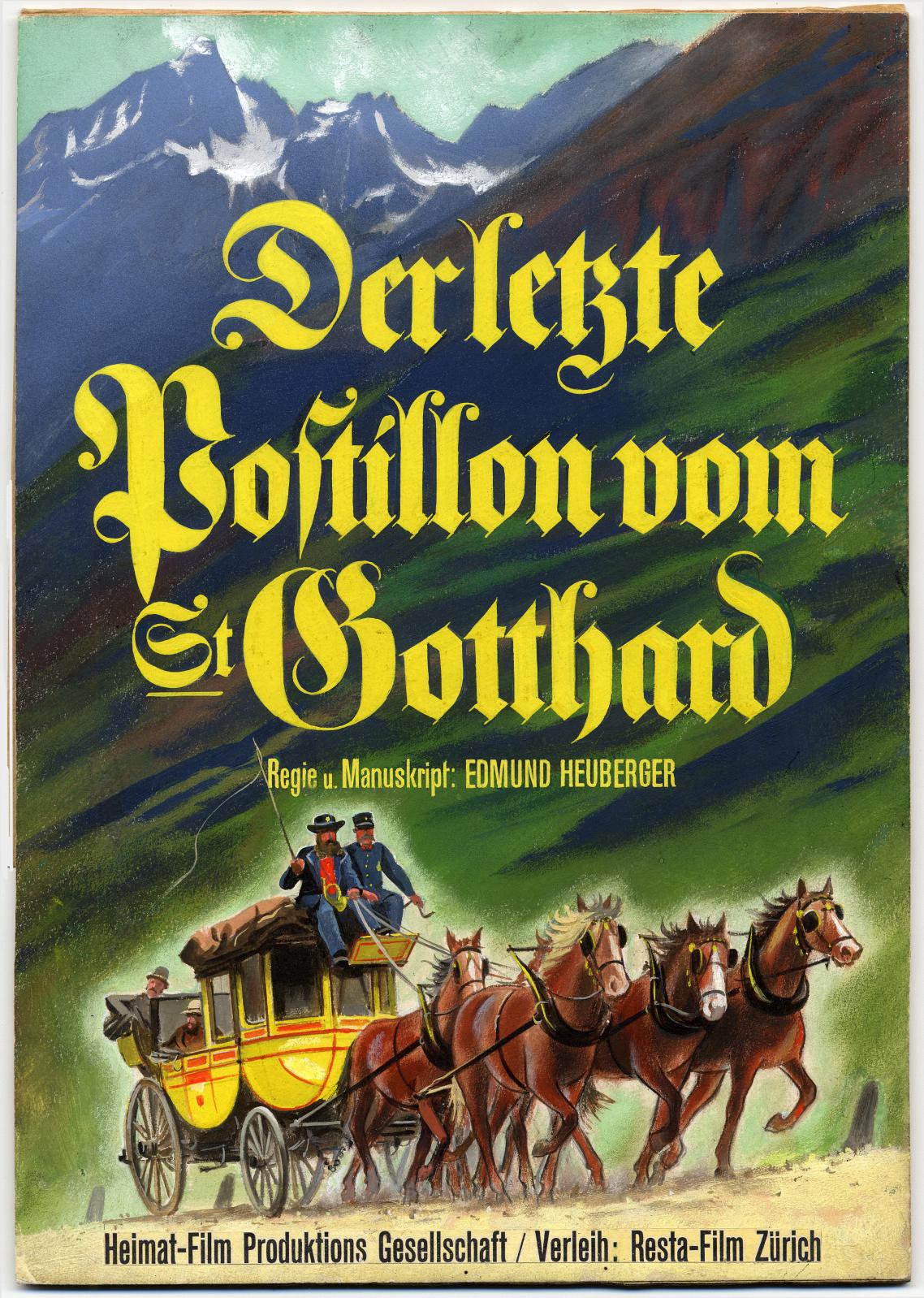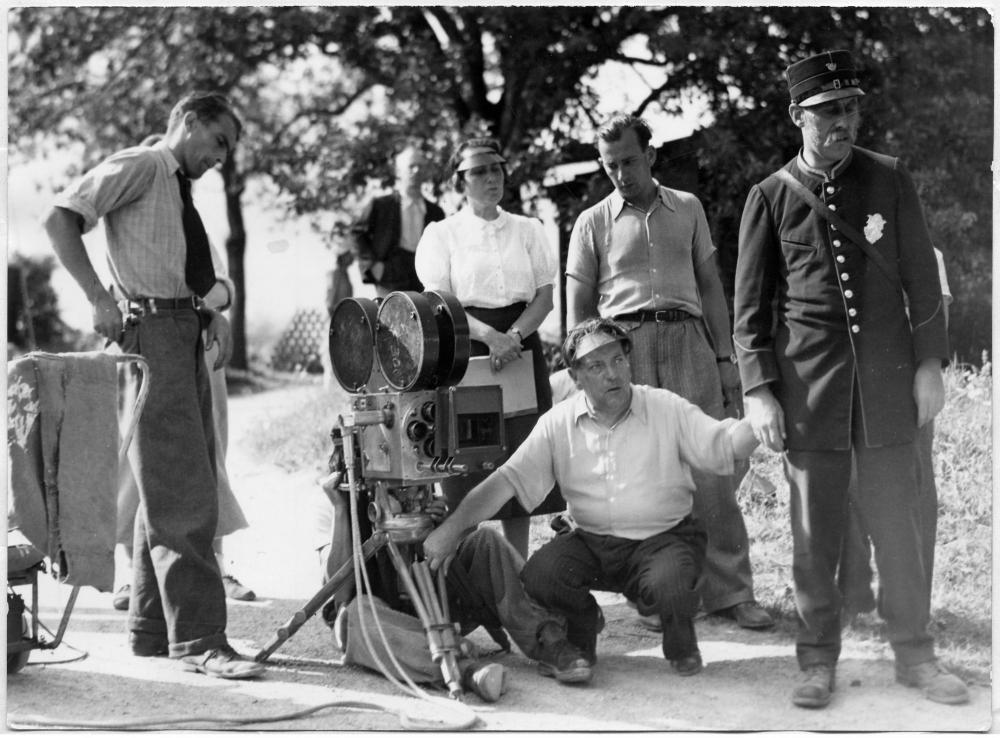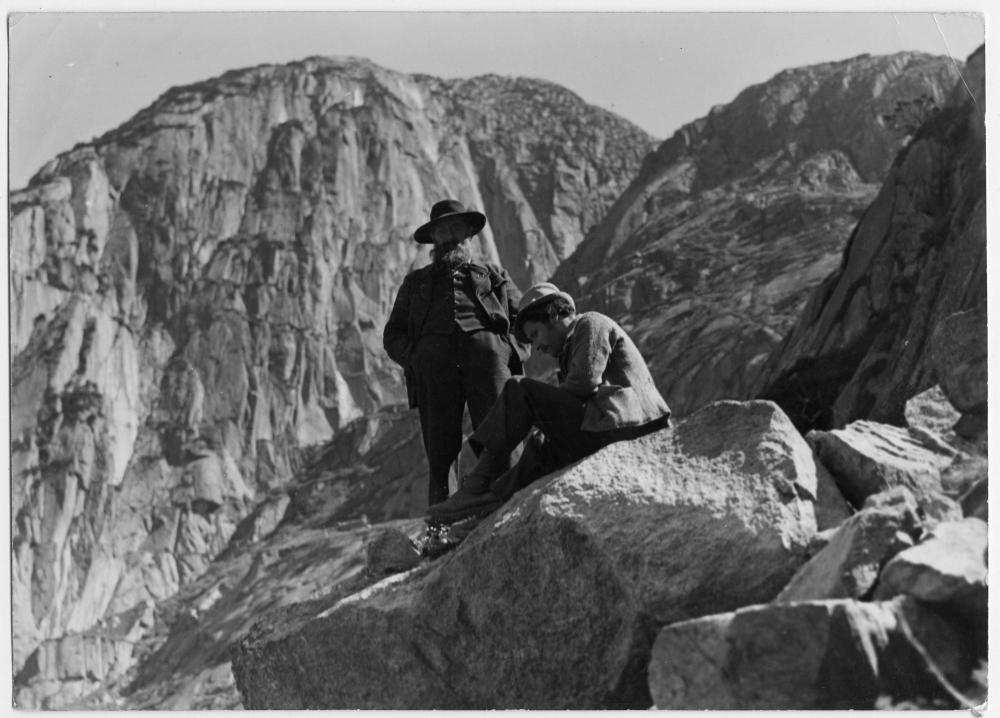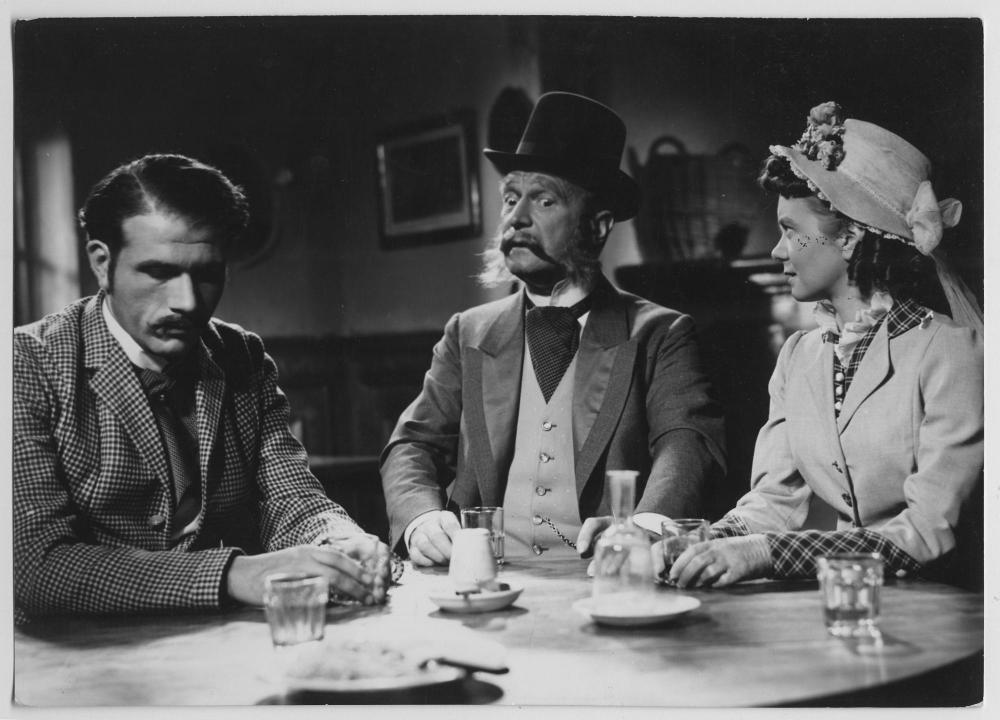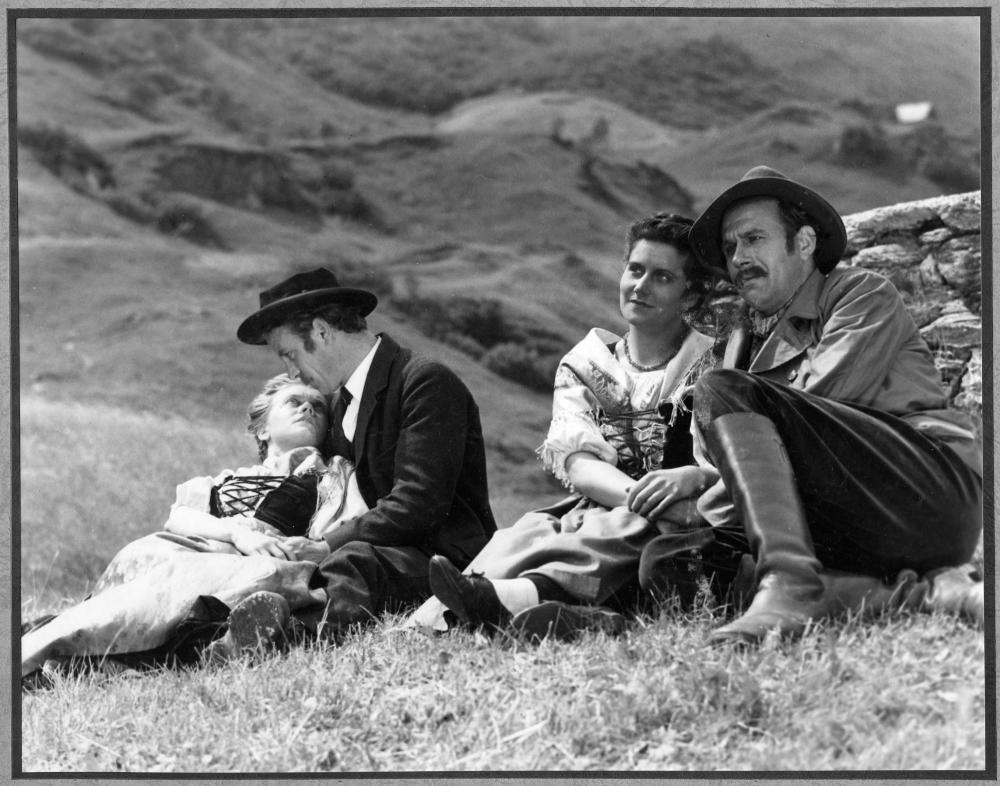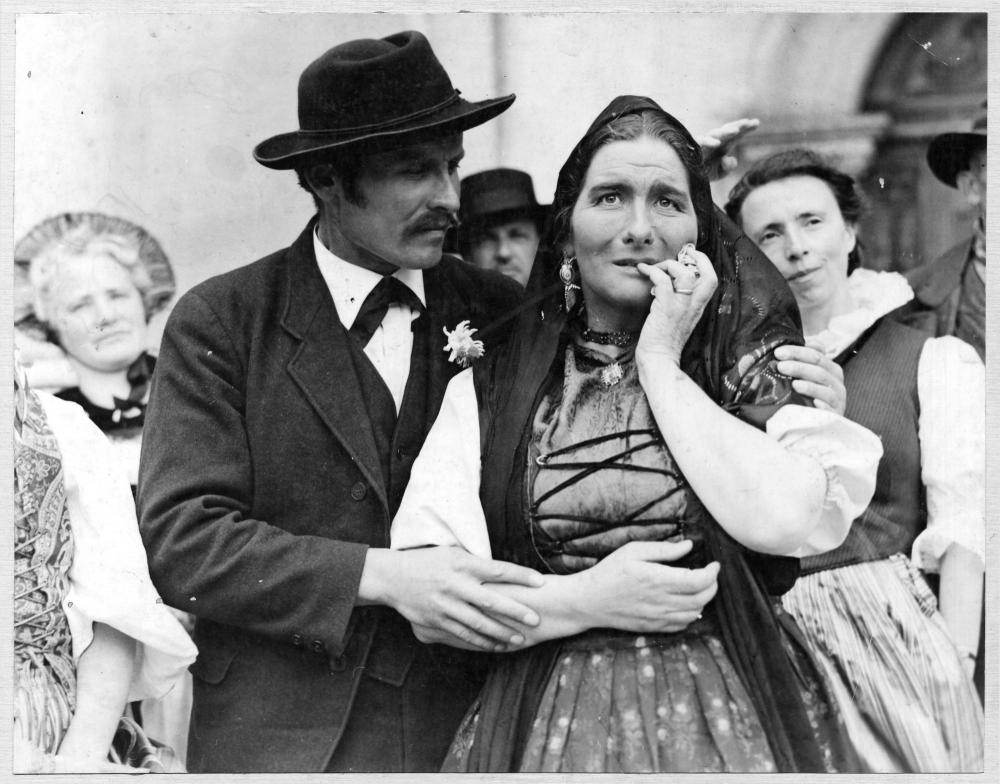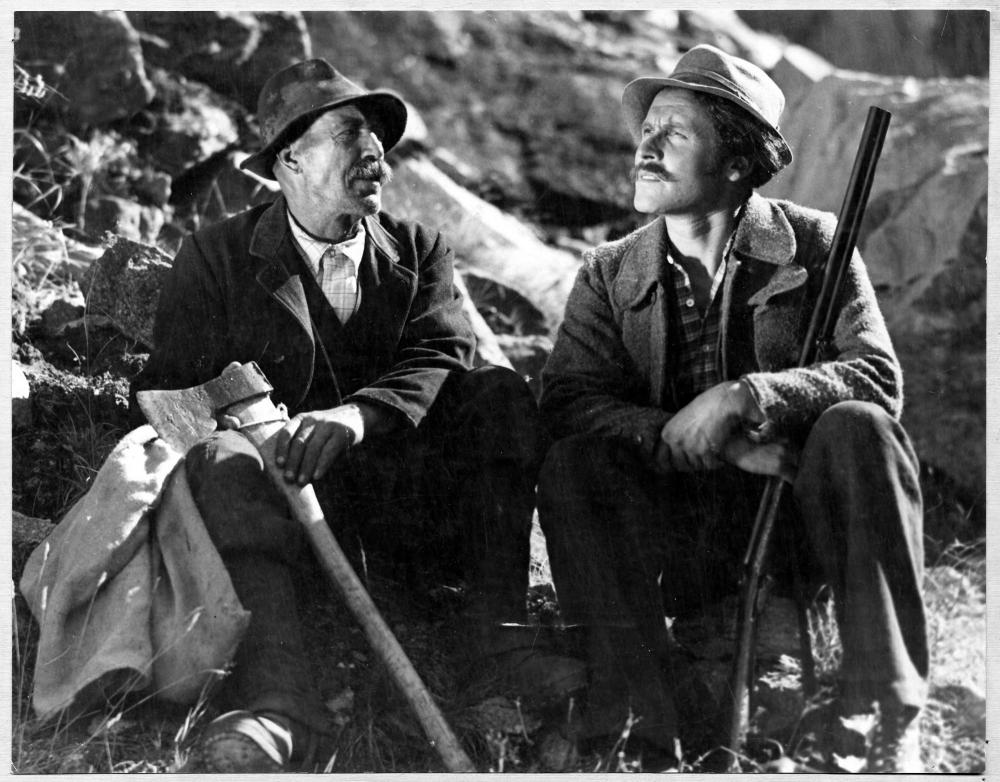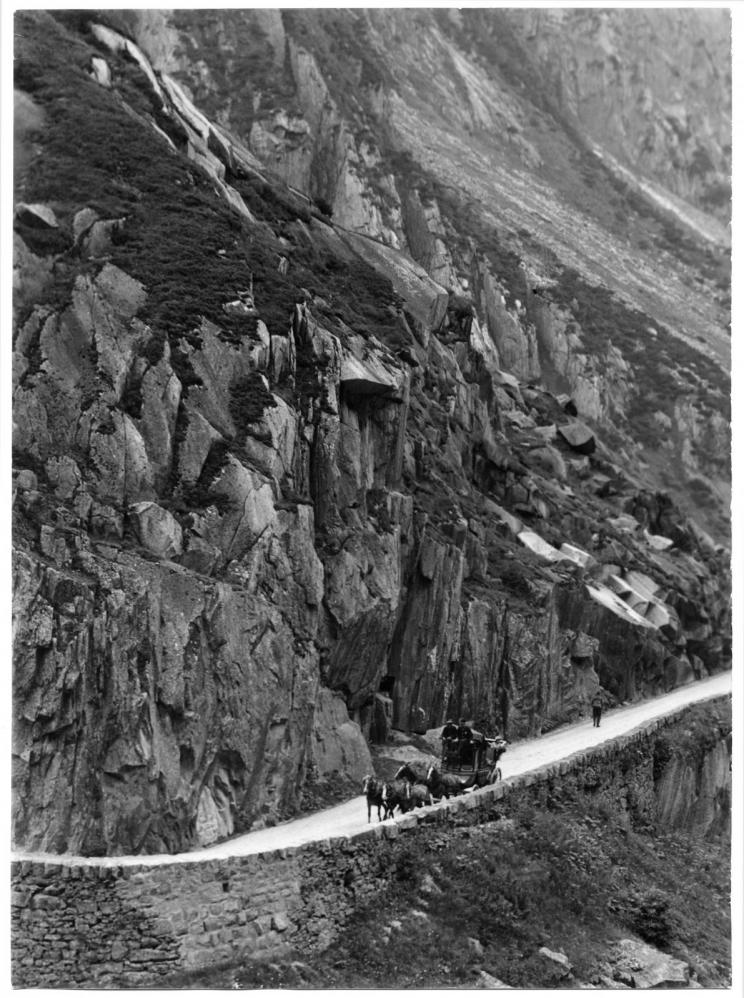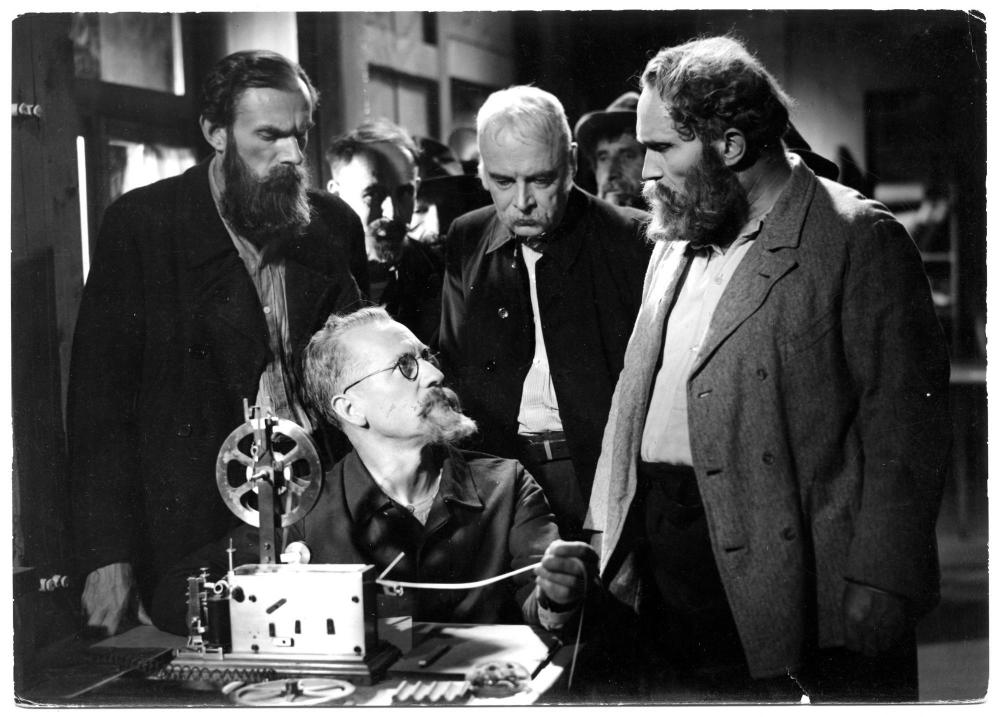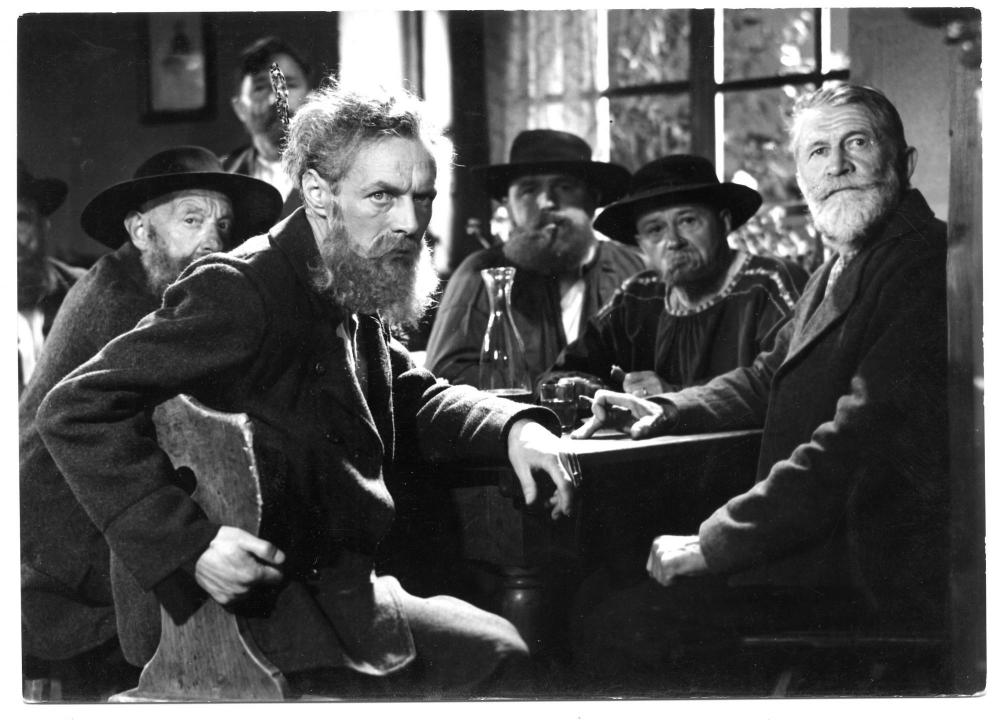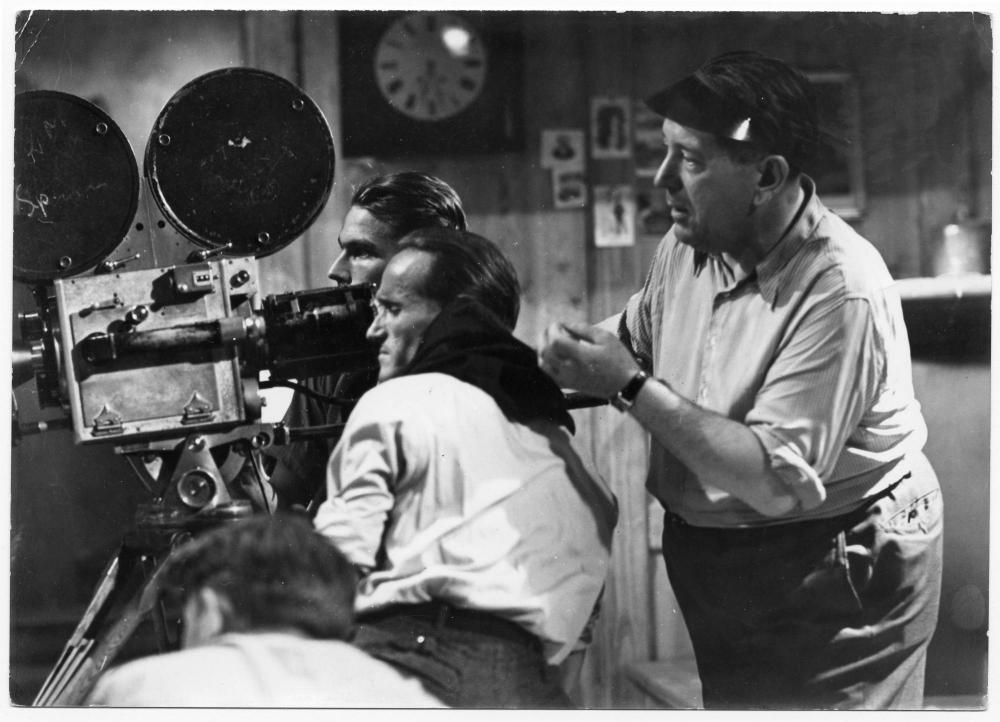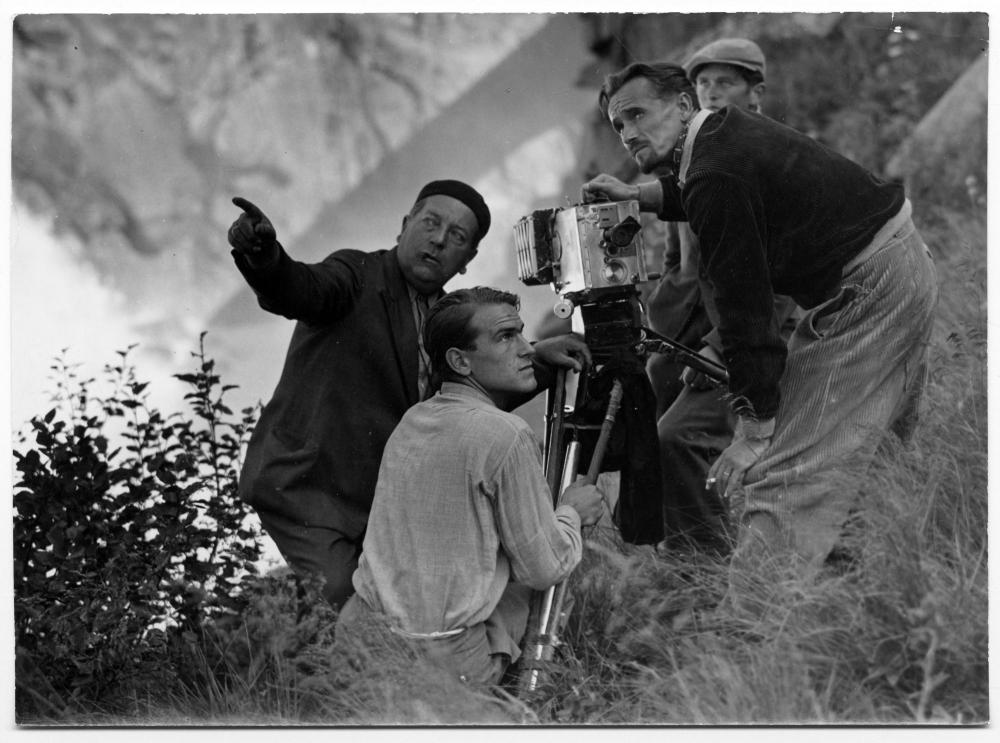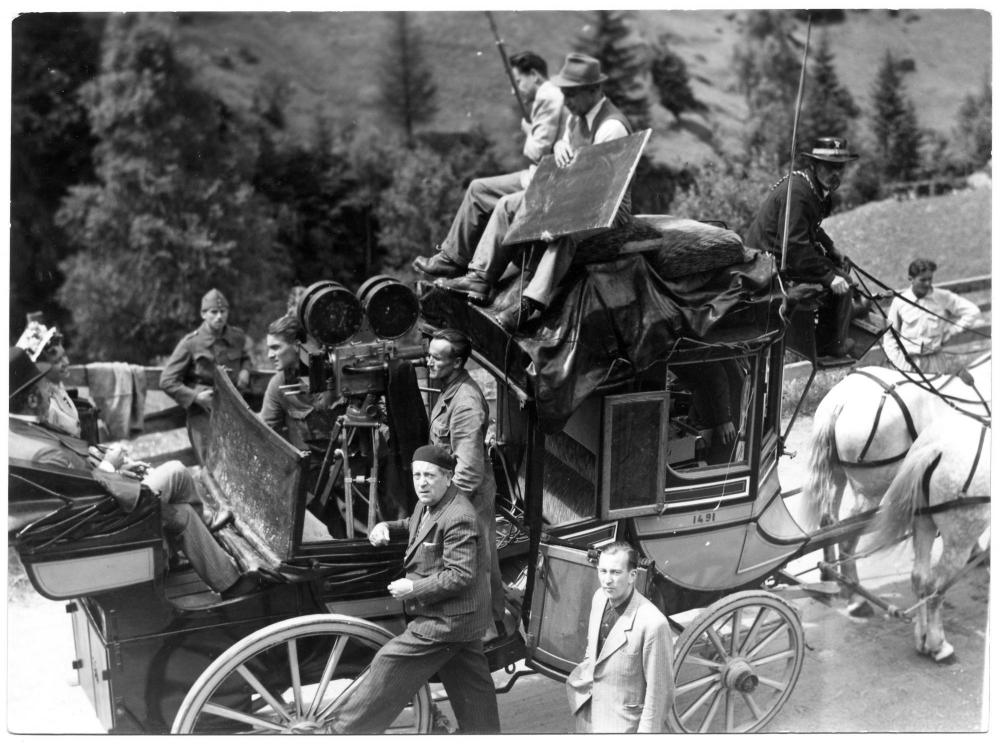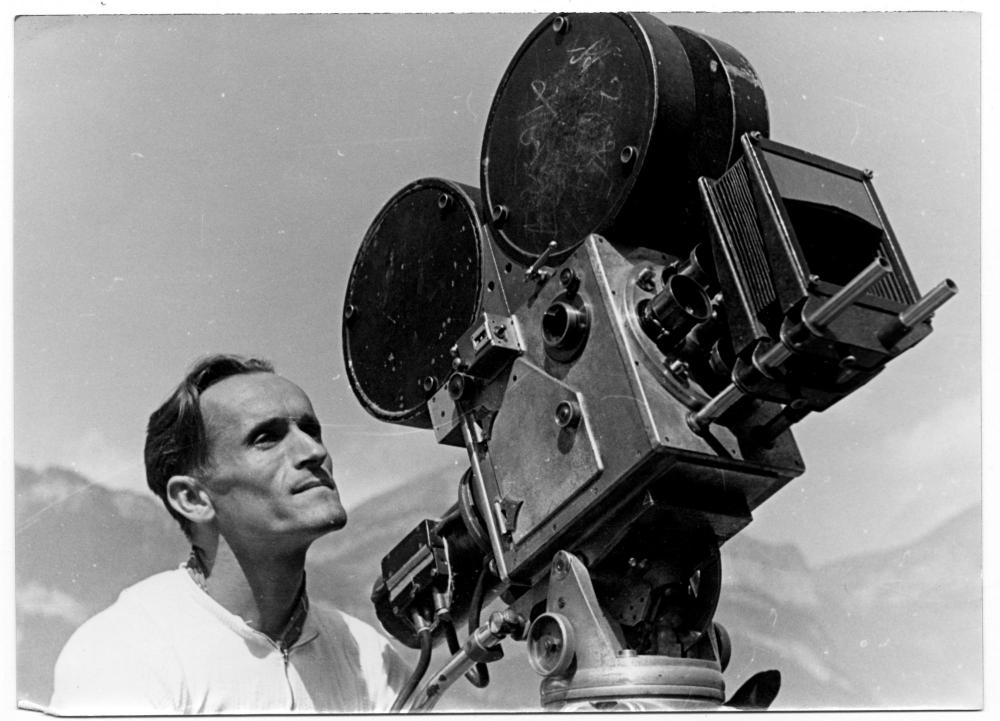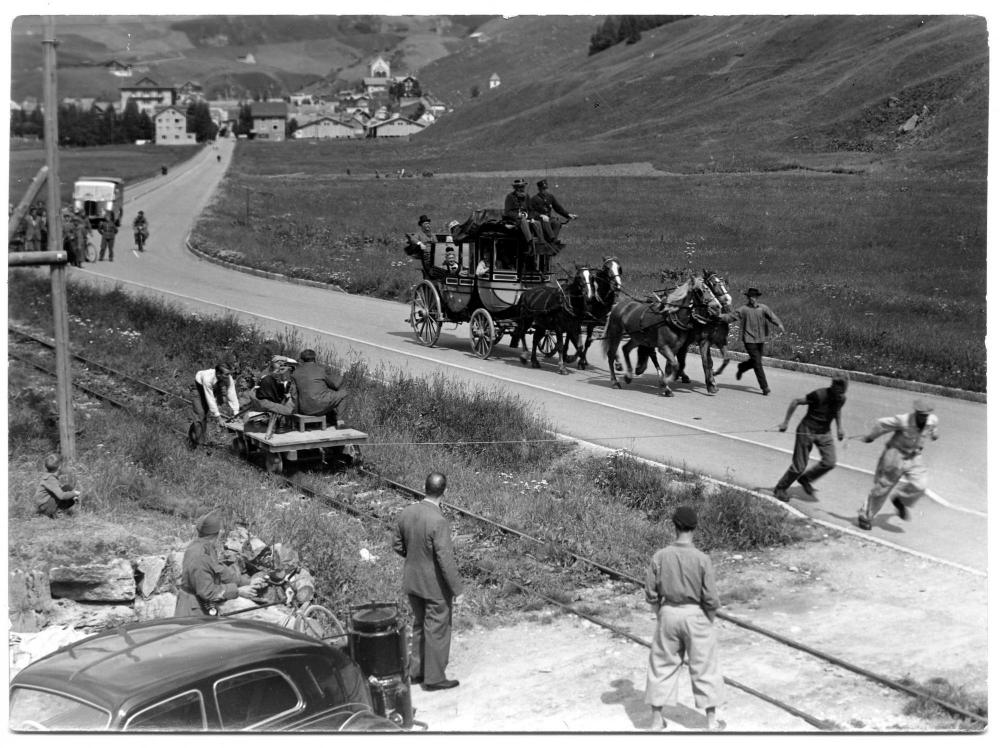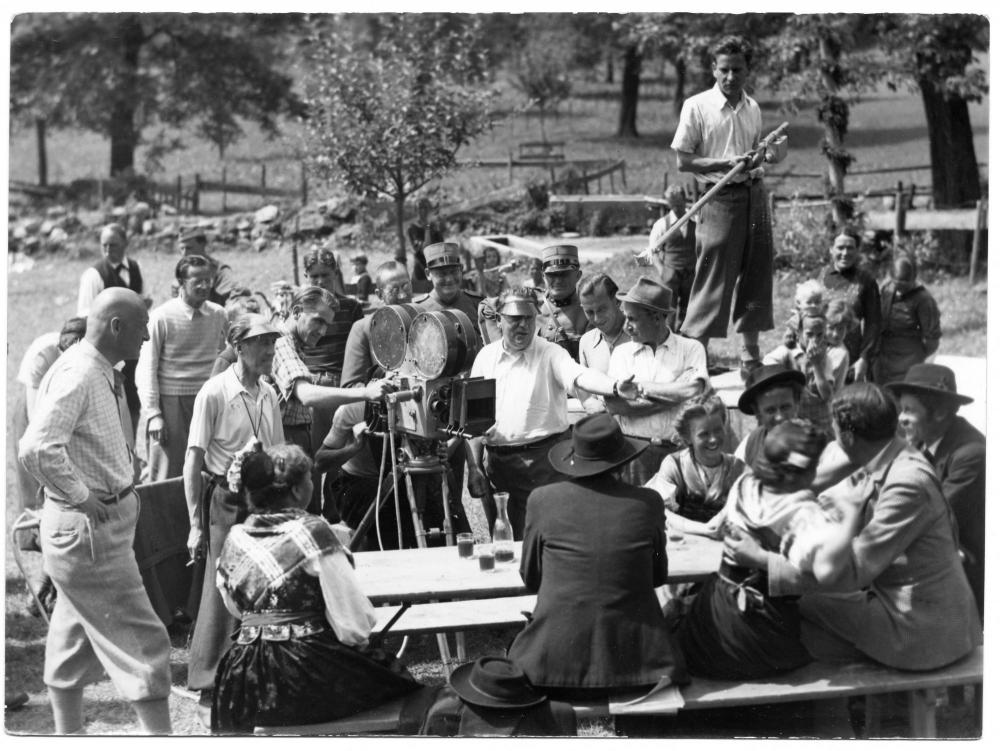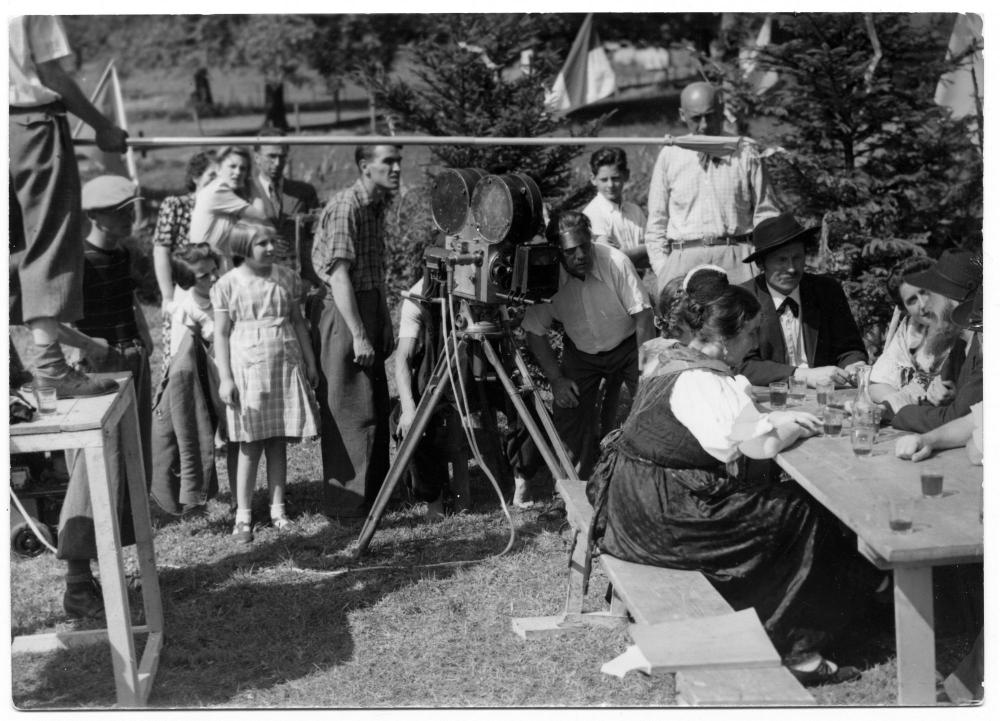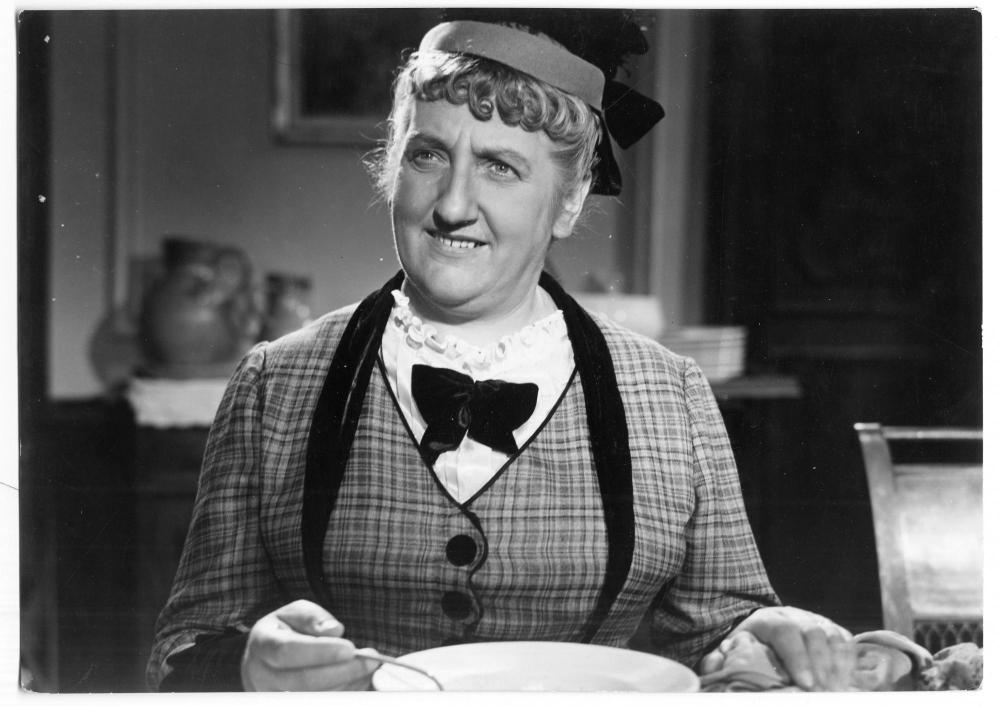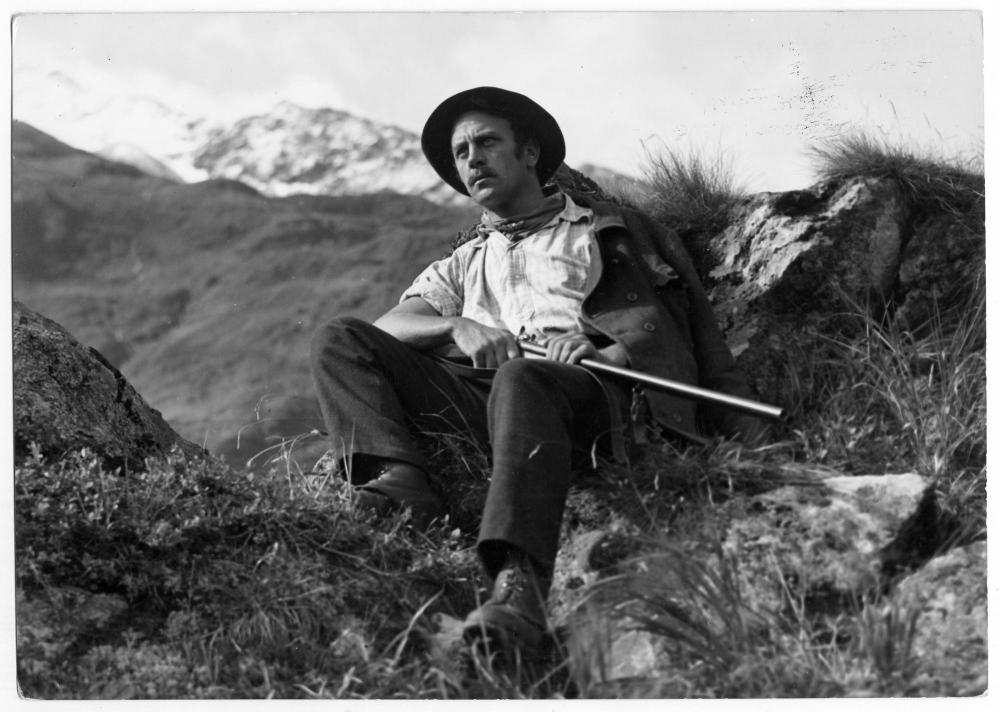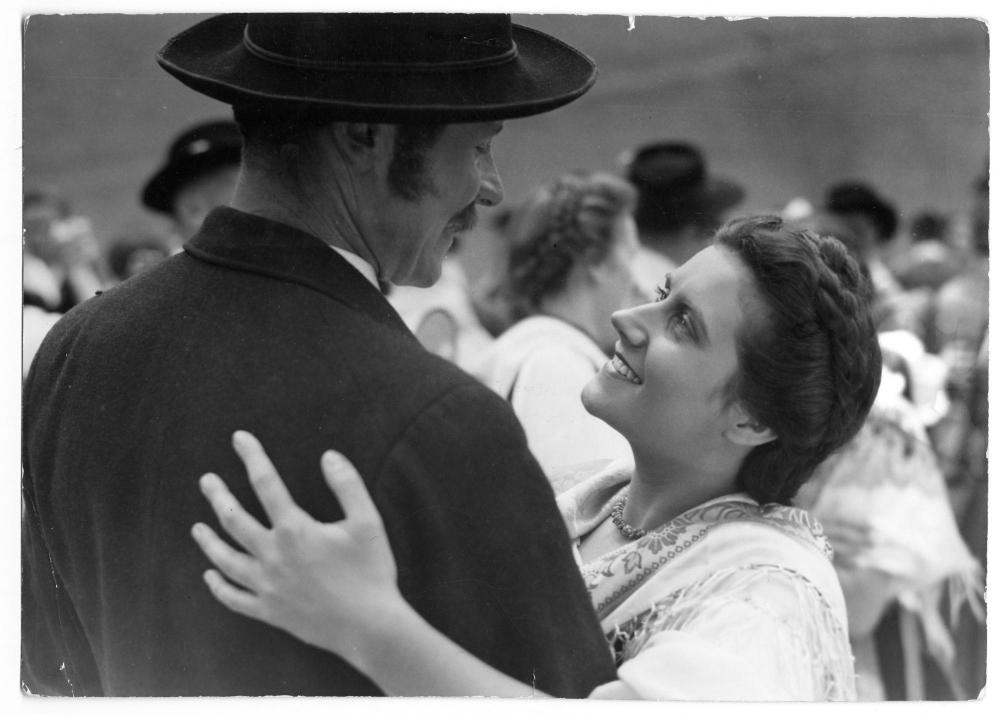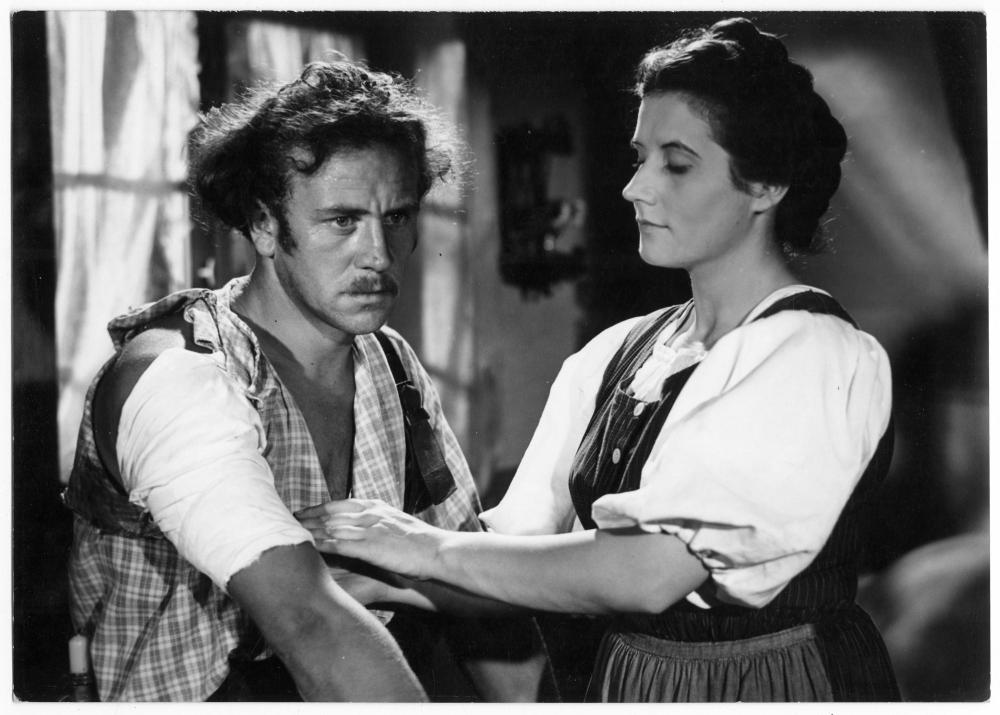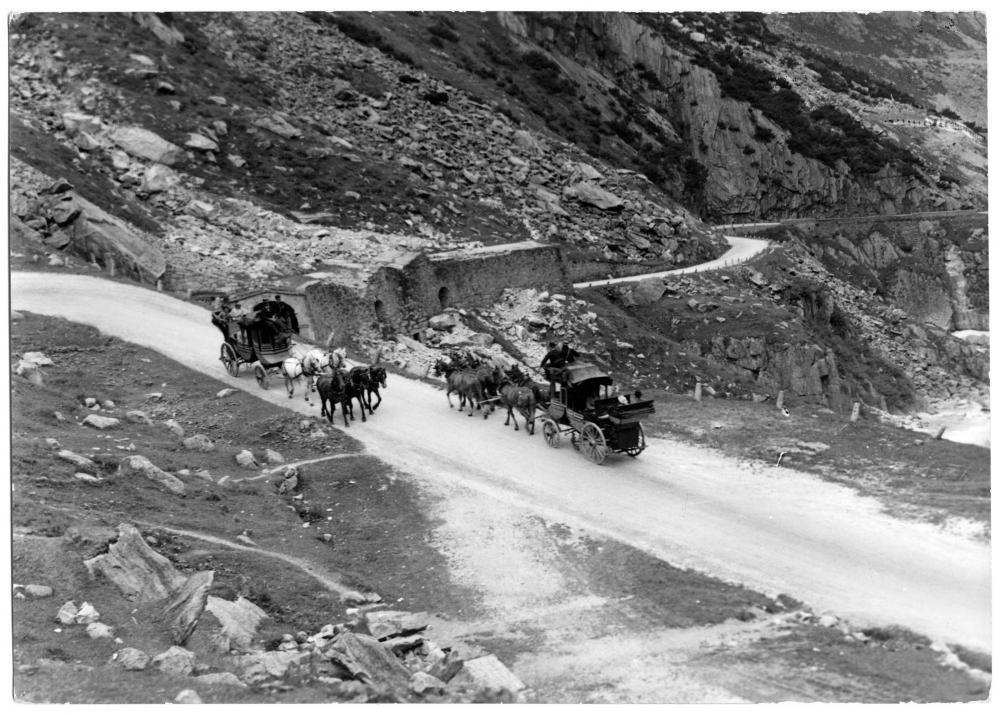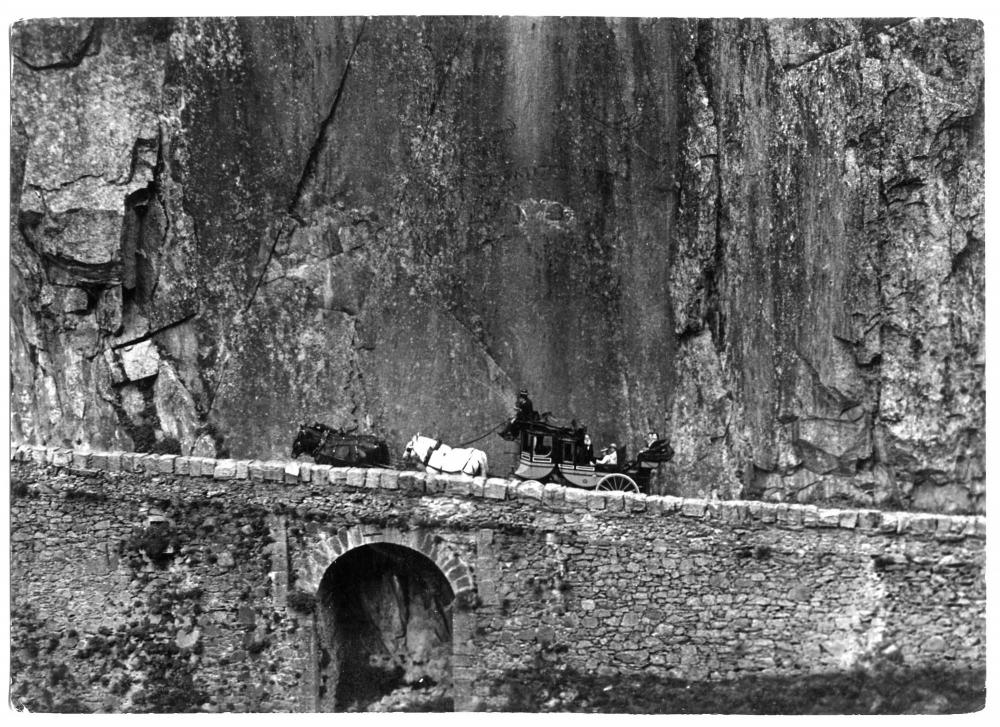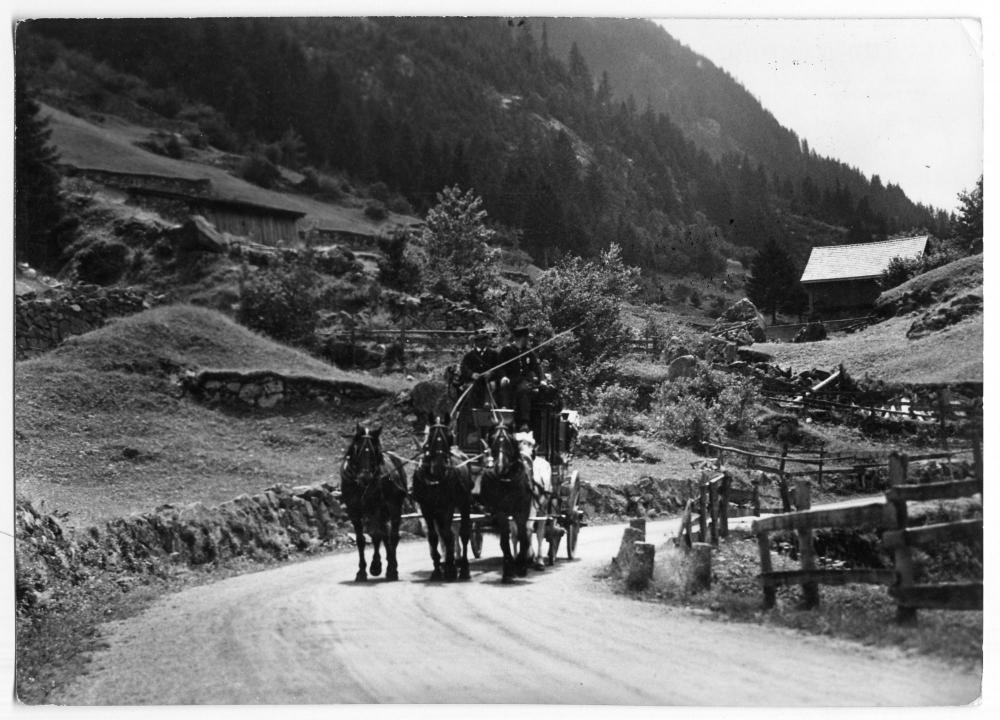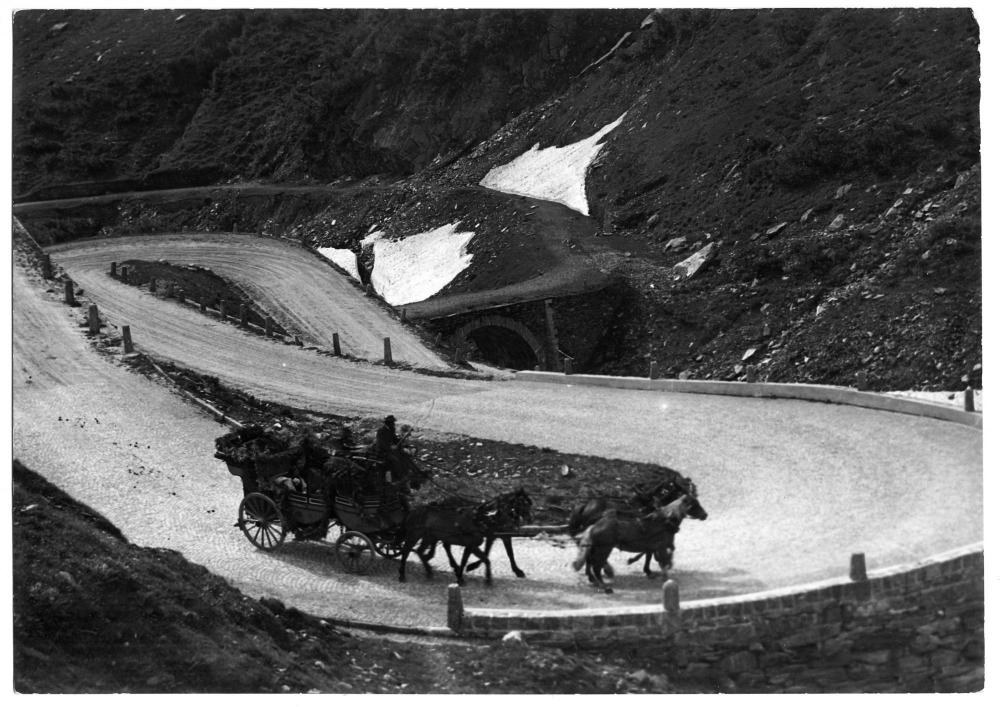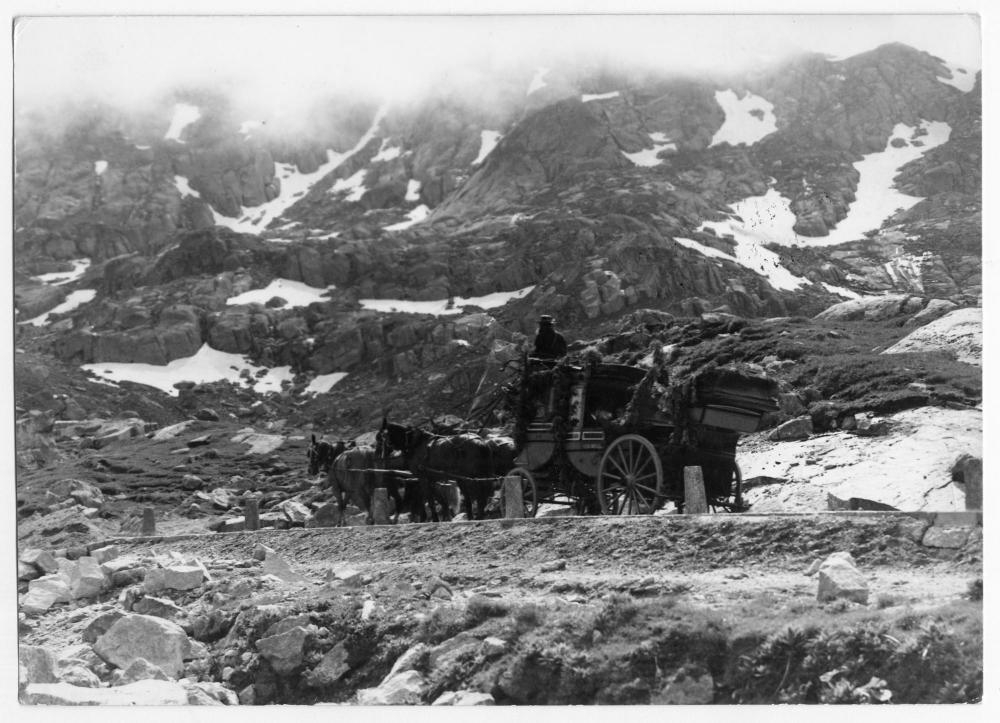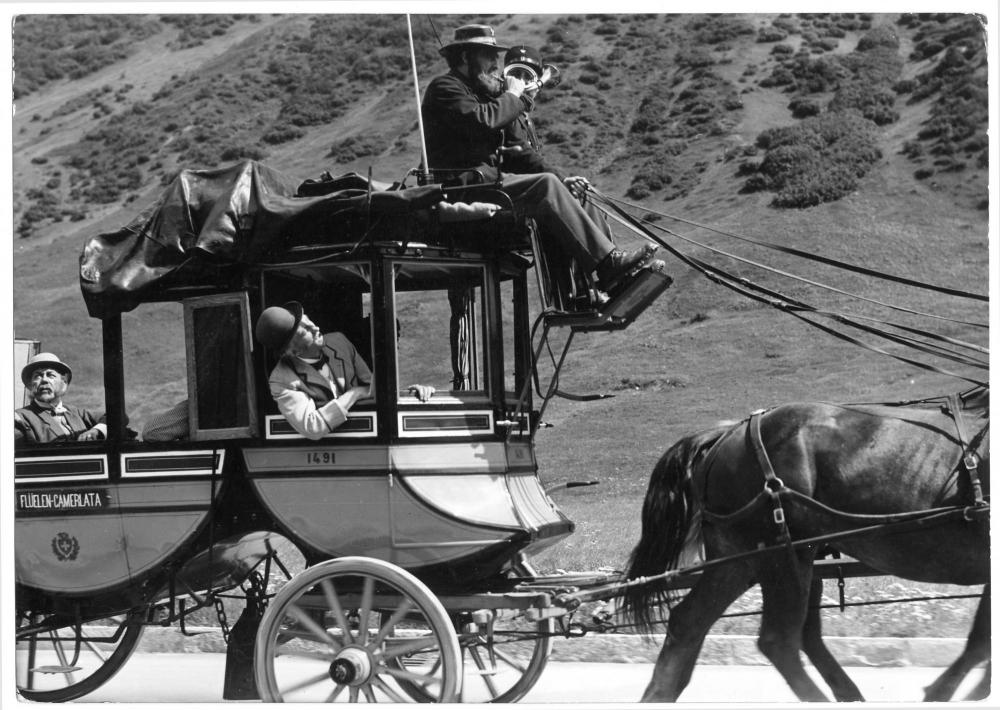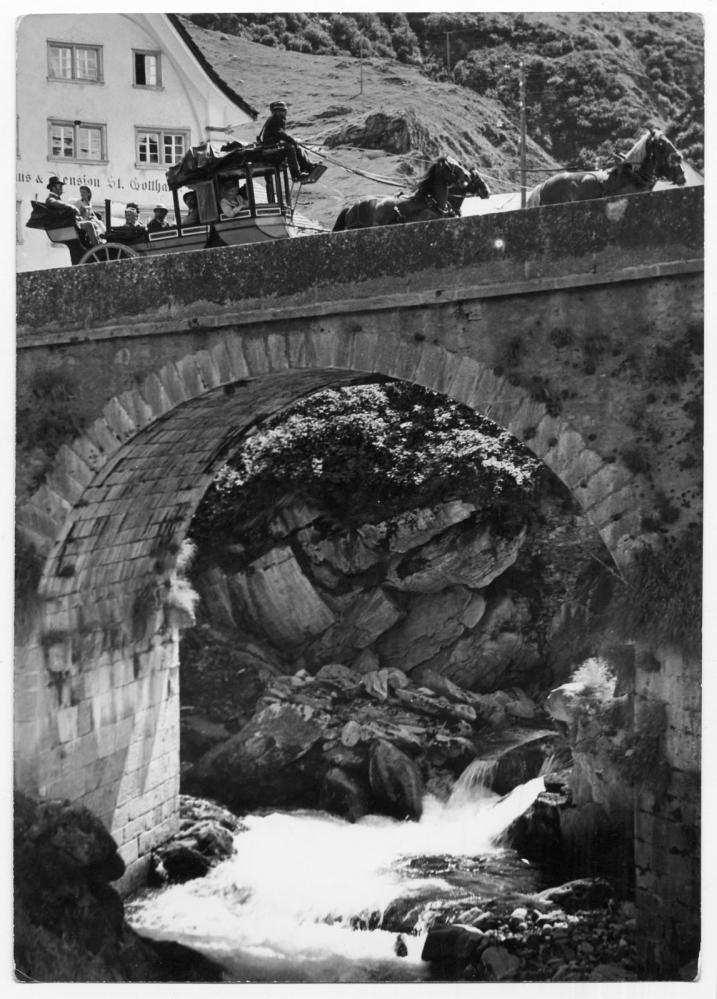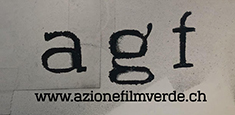Der letzte Postiollion vom Sankt Gotthard

Heimat-film Produktions
The title means "The last postillion (stage-coachman) of the St.Gotthard-pass". A company of select people joins the horse-driven coach for crossing the center of the Alps over the traditional path high on the mountain valley. It is the time of railways as the means of modernization. A tunnel is going to be built. The new fast way would render useless the small transport industry from which local people had made their living. The great mountainous landscape is the background for the conflicts which arise between rich and poor, local traditionalists and foreign modernizers. The daughter of a local, who is opposed against the tunnel, would like to get engaged with a tunnel engineer, but is also coveted by a local favored by her father.
Der letzte Postillon vom Sankt Gotthard tells the story of the construction of the first Gotthard tunnel, opened in 1882. Written and directed by Edmund Heuberger for the company Heimatfilm, the film describes all the stages of the undertaking through the figure of the engineer Favre and the daughter of an old coachman of the Gotthard, naturally hostile to the arrival of the railway. In order to have more means of production, the director contacts Venus-Film in Rome and its representative in Switzerland, Sefi-Film in Lugano. With no more news, Heimatfilm was very surprised to find out that, in 1941, the Italian company had made a Vetturale del San Gottardo (see related file) entirely shot in Italy, and sued them. With no success! While the Italian version evokes the Gotthard as a frontier to be opened thanks to the railway between Italy and the rest of Europe, the Swiss film is part of a series of films shot around the war years aimed at the "spiritual defence of the homeland" and describes the Gotthard as the cradle of the nation where our main rivers (Rhone, Rhine, Ticino) are born. The film was shot mainly in Altdorf, Lucerne, Göschenen, Andermatt and in the studio in Zurich.
Frédéric Maire, Director Cinémathèque Suisse


